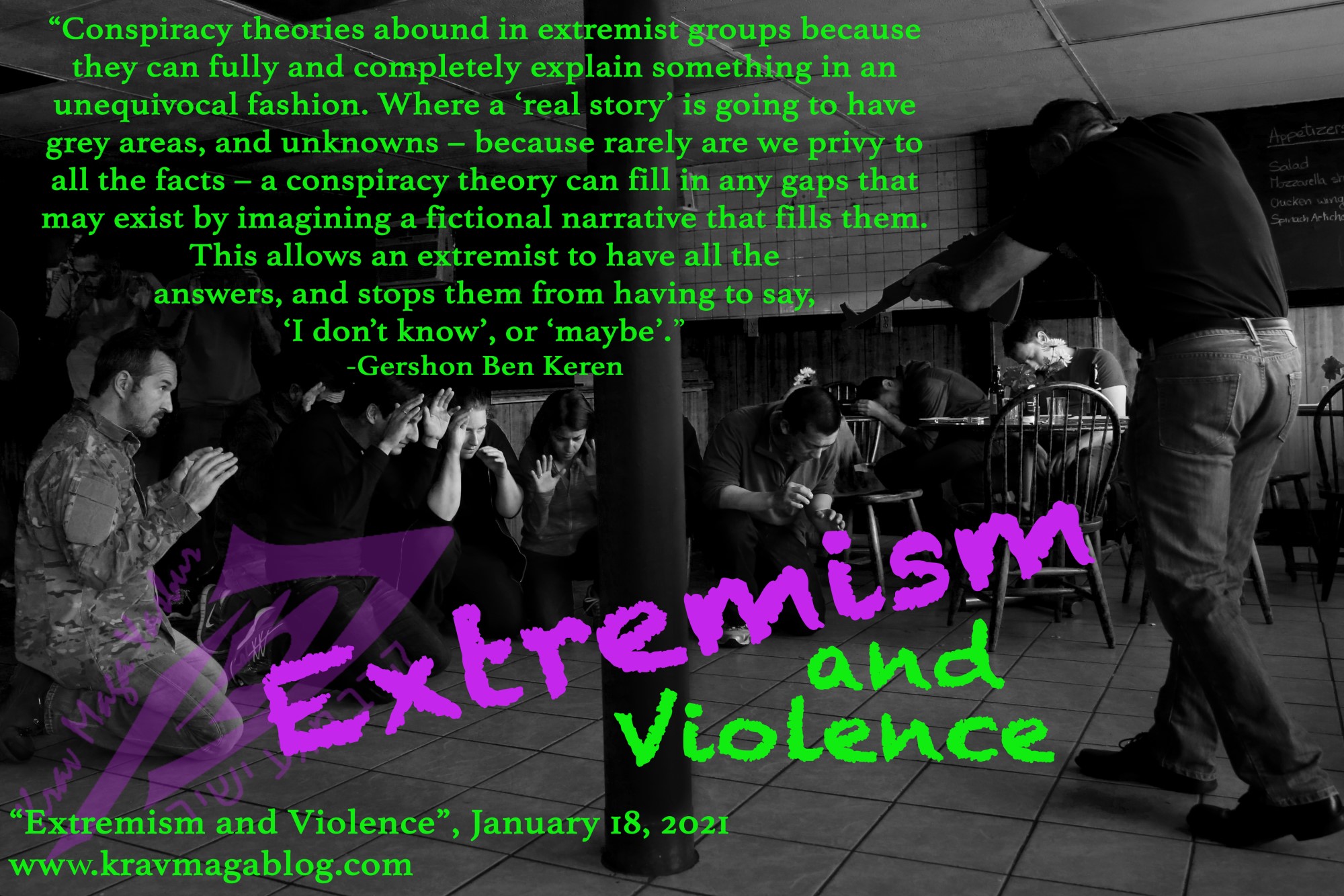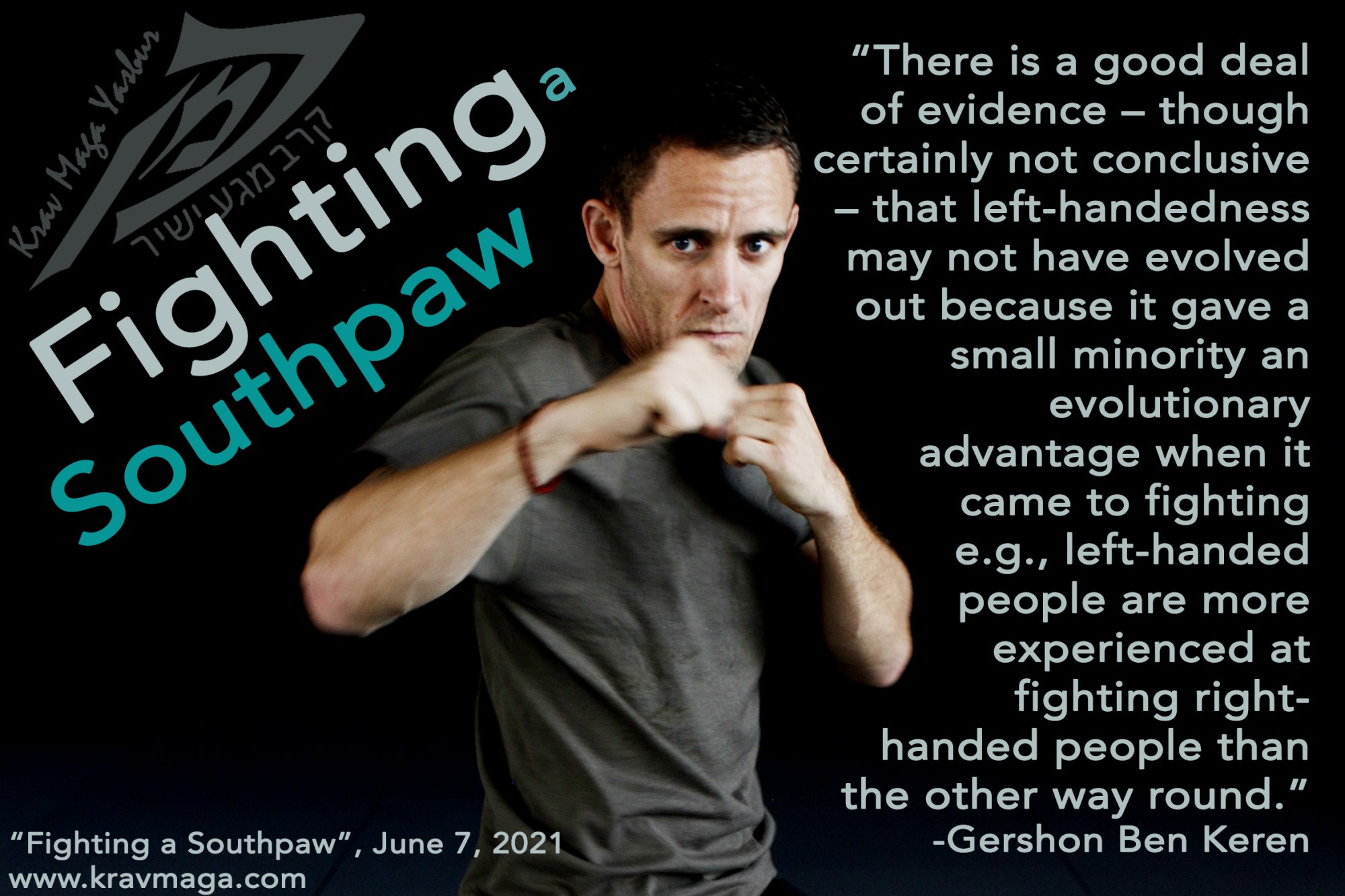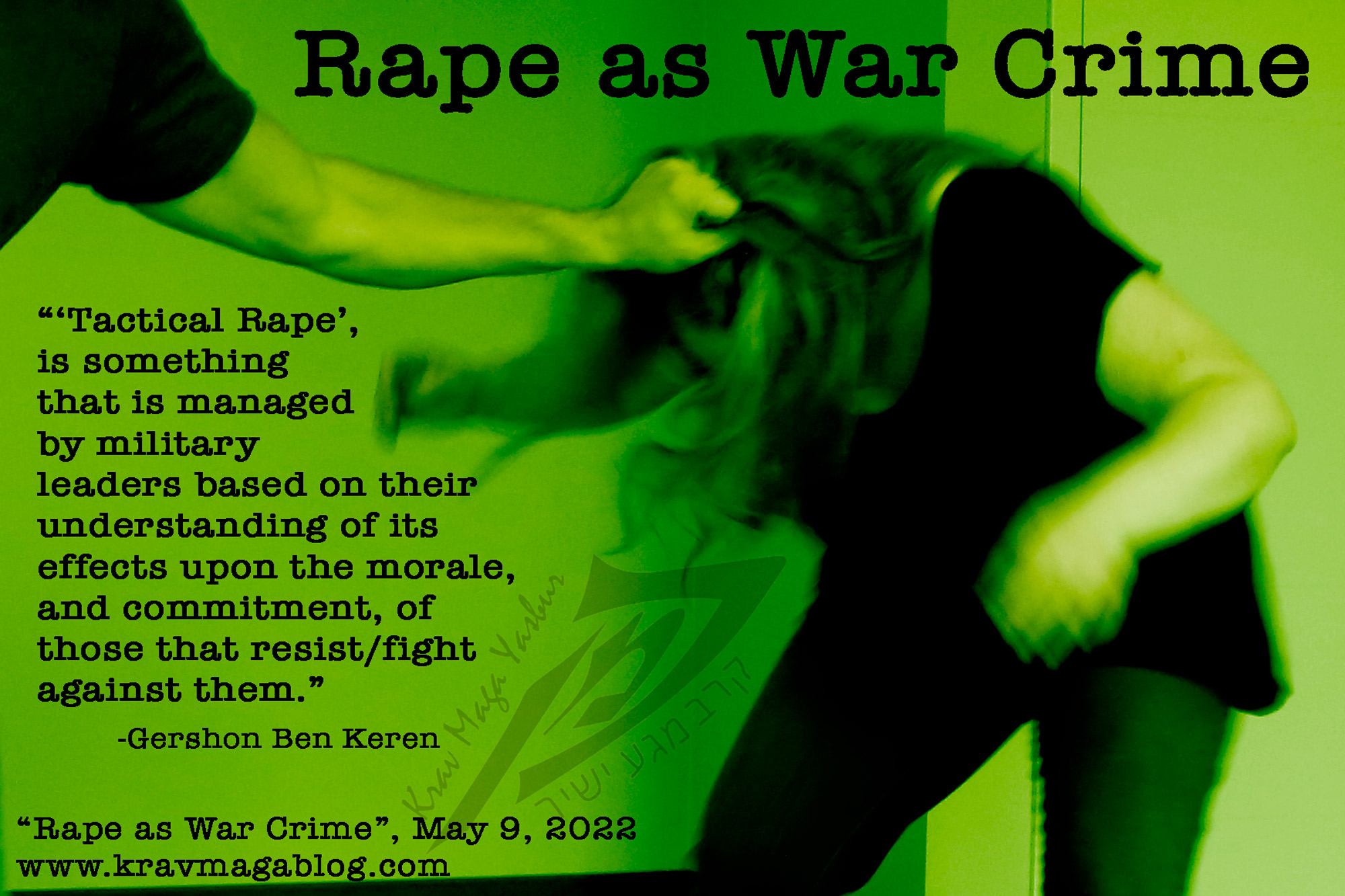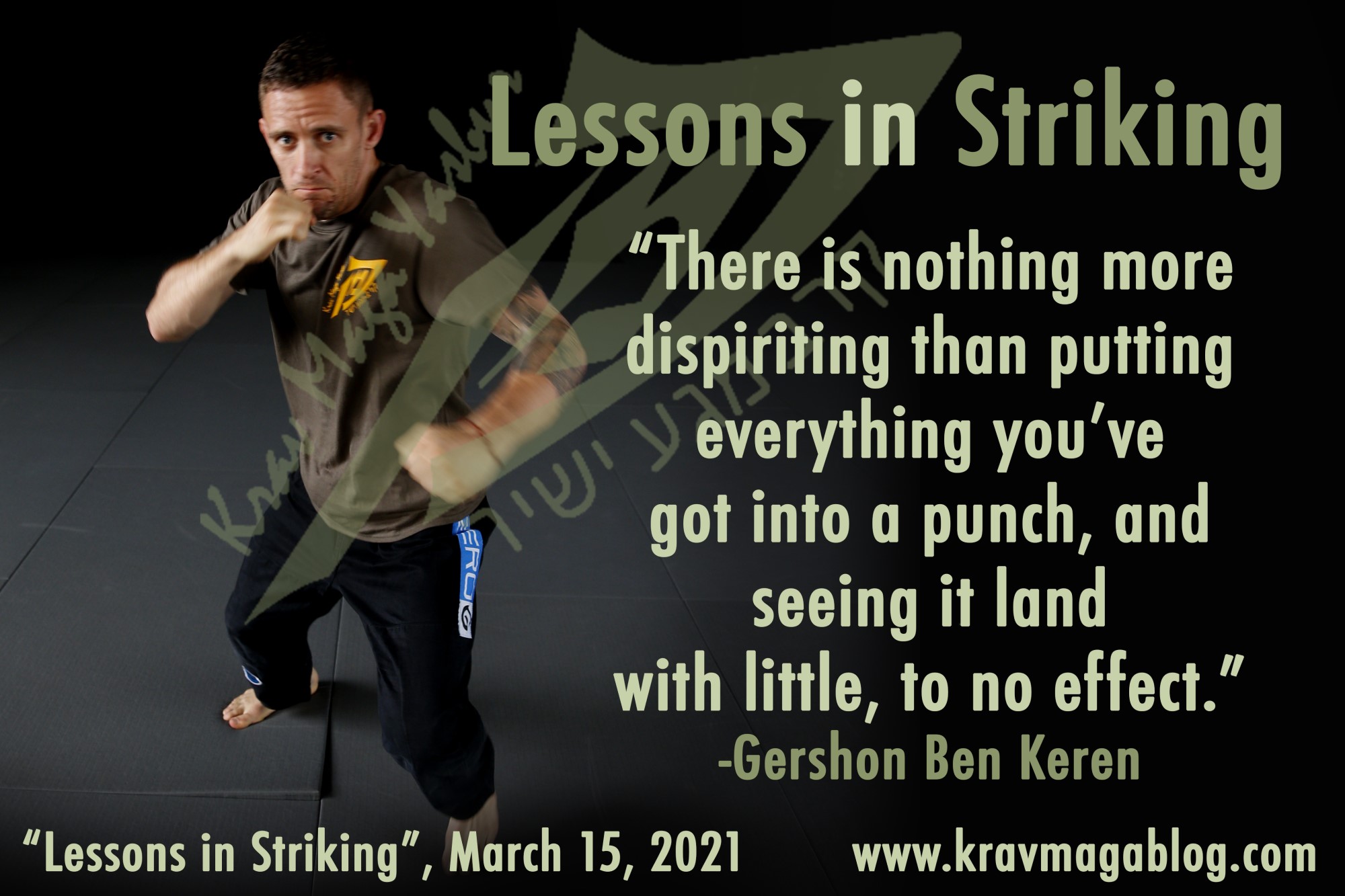Lessons In Striking, is an article written by Gershon Ben Keren, a 5th Degree Black Belt in Krav Maga, who teaches Krav Maga in Boston, MA. He has also authored three Amazon best-Selling Books on Krav Maga.
I have by nature always been a grappler. My physical build suits grappling e.g., short limbs, low center of gravity etc., in a way that it doesn’t lend itself to striking. However, this doesn’t mean that I value grappling above striking, or by default prefer grappling solutions to striking ones. It does mean that because I am not a natural puncher/striker, this is part of my game that I’ve had to invest a lot of time in to achieve a level of competency. Whilst I generally preferred to use grappling solutions when I worked on the door - for numerous reasons - being able to punch hard and accurately often made situations easier to handle. In this article, I’d like to share some of the mistakes I made along the way, as I developed my striking/punching game, in the hope that this may be useful to those who have yet had to utilize striking in a real-life confrontation.
Looking back, perhaps my biggest mistake when punching was to try and make every punch the power-shot that concluded the fight. This caused me to over-commit to my strikes/punches and expend much more energy than was necessary. I believe this was ultimately down to a lack of confidence in my ability to hit hard as well as being driven by a fear of failure. In training scenarios, we usually punch from a strong position, where we have the time, range and distance to punch hard, however in reality this is rarely a luxury we enjoy, unless we’ve been able to create these things beforehand. This means that we are normally punching and striking from sub-optimal positions, where we’re not able to generate the same amount of power that we’re used to in training. Rather than accept this and use other strikes/punches to get into a position from which I could strike hard, I used to rush things, applying more effort to my punches in the hope that added “energy” would make up the short-fall – it never did. There is nothing more dispiriting than putting everything you’ve got into a punch, and seeing it land with little, to no effect. It was only as I became more confident in my striking ability, that I learned not to rush things, and recognize that power shots/punches need to be set up i.e., not every punch needs to deliver maximum, concussive force. However, in saying all of that, punches do need to count. I see a lot of video clips – especially Krav Maga ones – where people seem to be of the opinion that a multitude of strikes and punches, however ineffective, will overwhelm an aggressor, and that learning how to punch/hit hard isn’t necessary. If you want to have a striking game, you need to learn to hit/punch with power and effect.
My other failure when punching was to overthink what I was doing. By the time I was working on the door, I’d been practicing Judo for about ten years. By that time, throwing was an automatic process that I didn’t really think about. It took me awhile to get to the same place with striking/punching. I never contemplated failure when executing a throw, because I never thought about the other person when throwing. I knew if I executed the throw, with all its component parts, it would work. However, when I used to punch, I’d get caught up thinking about all of the different reasons as to why the punch could fail – and because of this they often did. This was partly down to a bad training habit I’d gotten into when doing pad work with partners. Rather than simply throwing punches when the pads were presented, so that my striking was reactionary, I’d pause slightly to make sure that I was set to throw the “perfect” combination etc. Outside of the training environment, in reality, this pause became a moment when my doubts were given an opportunity to enter in, and I’d question throwing the strike. This is an error I see a lot in pad-work training, especially with individuals who don’t spar. Hitting the pads becomes an endgame in itself – something to perfect – rather than a method of developing skills that can be used in the real-world. The irony of this is that the more we try and perfect our skills on the pads – by thinking about what we are doing – the less decisive we become, and the more likely we are to create opportunities for doubts to creep in. It took me some time and effort to change the way I trained so that my striking/punching became more instinctual and automatic.
If you’ve never punched full power without wearing a glove, you may also have doubts as to whether your fist and wrist have the strength and integrity to hit hard without support. I would add to this that if you are used to sparring wearing 12 oz gloves or similar, striking bare-knuckle will be a totally new experience; and one that you may not want to try for the first time in a real-life confrontation. One of the doubts that I consistently had, when I first started throwing punches was whether my hands/fists were conditioned enough to do so. In a glove, the wrist is well supported, so it isn’t necessary to think too much about fist and wrist alignment, however when punching hard, a misalignment can mean that you don’t connect with the right knuckles and that you put a lot of strain on the joint. This is where I would advocate for performing some bag work and sparring – light at first – without wearing a glove, so that you can gain confidence in your ability to throw punches without worrying about damage to the hands and wrists. This was when I first started training on the makiwara (and still do), to ensure that when I punch my strike has physical integrity, and I don’t risk injuring myself.
When we are called on to put our skills to the test in a real-life confrontation, we will want to have eradicated any doubts, problems, and issues in the training environment. Unfortunately, many people have an “it will be alright on the night” attitude, believing that they will rise to the occasion when called on to do so. The danger is that there is often a big gulf between training and reality, and we don’t want to discover this in the moment when everything is on the line.
0 COMMENTS
















